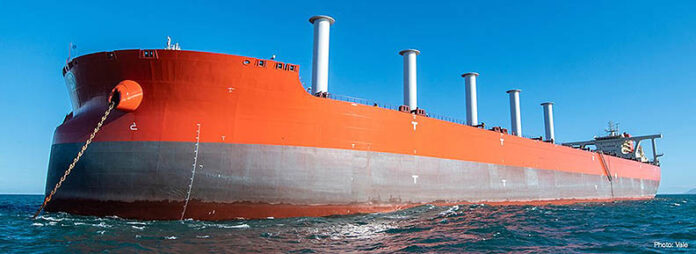-
The International Maritime Organization has started requiring ocean-going vessels to gauge their energy efficiency to earn greenhouse gas emission ratings
-
Mandatory calculation of a ship’s energy efficiency and collection of data for the annual carbon intensity reporting took effect on January 1
-
The new IMO rules require ships to improve their energy efficiency in the short term to reduce their carbon emissions as the shipping industry moves towards a 40% cut in CO2 emissions by 2030 from levels in 2008
The International Maritime Organization is enforcing new ship rules that require vessels to measure their energy efficiency to earn greenhouse gas (GHG) emissions ratings.
Mandatory calculation of vessels’ attained Energy Efficiency Existing Ship Index (EEXI) and data collection for reporting their annual carbon intensity indicator (CII) and associated CII rating came into effect on January 1, 2023. The CII rating system took effect on November 1, 2022.
The new measures are part of amendments to the International Convention for the Prevention of Pollution from Ships (MARPOL) Annex VI that took effect on November 1, 2022. These technical and operational amendments require ships to improve their energy efficiency in the short term, thereby reducing their GHG emissions.
IMO, the United Nations regulatory body that oversees the shipping industry and protection of oceans, included the two measures in its commitment under its 2018 Initial Strategy on Reduction of GHG Emissions, requiring ships to achieve a 40% cut in carbon emissions by 2030 from levels in 2008.
The EEXI generally applies to each ship of 400 gross tonnage (GT) and above, while the CII applies to ships 5,000GT and above. Ships 400GT or above will need to be surveyed and issued appropriate certificates.
RELATED READ: MARINA urges PH ships to develop greenhouse gas-reduction measures
The provisions on EEXI and CII in Chapter 4 of the MARPOL agreement annex do not apply to ships 400 gross tons and above that sail solely within waters under the sovereignty or in the jurisdiction of the country whose flag they fly.
However, IMO said the flag states and ship operators should ensure that such ships are built and act in a manner consistent with the requirements of Chapter 4 as far as is reasonable and practicable.
The Marine Environment Protection Committee, an IMO panel, will review the effectiveness of enforcing the CII and EEXI requirements by January 1, 2026 at the latest and develop and adopt further amendments as required, the maritime regulator said.
IMO said attained EEXI must be calculated for vessels in accordance with the different values set for ship types and size categories. The calculated attained EEXI value for each individual ship must be below the required EEXI to ensure the ship meets a minimum energy efficiency standard.
According to IMO, carbon intensity links GHG emissions to the amount of cargo carried over the distance travelled by the ships.
With the requirements for EEXI and CII certification now in effect, IMO said ships are required to complete their first annual reporting in 2023 and will be given their initial ratings in 2024.
IMO explains that a ship’s attained EEXI indicates its energy efficiency compared with a baseline. The CII determines the annual reduction factor needed to ensure continuous improvement of a ship’s operational carbon intensity within a specific rating level.
IMO said the actual annual operational CII achieved must be documented and verified against the required annual operational CII to determine the ship’s operational carbon intensity rating.
The CII measures how efficiently a vessel above 5,000GT transports goods or passengers and is given in grams of carbon dioxide emitted per cargo-carrying capacity and nautical mile, explains DNV, which offers advisory, certification, classification, analytics and other maritime-related services.
DNV said the first reporting of the CII based on 2023 data is due no later than March 31, 2024. Vessels will receive a rating of A (major superior), B (minor superior), C (moderate), D (minor inferior) or E (inferior performance level).
The rating thresholds will become increasingly stringent towards 2030. A vessel rated D for three consecutive years or rated as E, will need to develop a plan of corrective actions.
IMO said a ship rated D for three consecutive years, or E for one year, will have to submit a corrective action plan to show how the required index of C or above will be achieved.
Administrations, port authorities and other stakeholders as appropriate, are encouraged to provide incentives to ships that are rated as A or B, IMO said.
DNV said that from 2024, at the latest by March 31, the CII must be calculated and reported to the data collection system (DCS) verifier together with the aggregated DCS data for the previous year, including correction factors and voyage adjustments.





